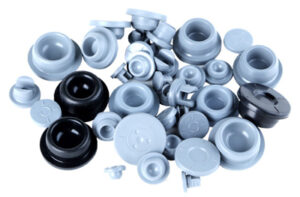Global synthetic rubber market forecast at $56 billion by 2028
Washington, DC – Global synthetic rubber market is valued at USD 39.3 billion in 2021 and is projected to reach a value of USD 56.0 Billion by 2028 at a CAGR (Compound Annual Growth Rate) of 6.10% over the forecast period 2022-2028 according to Vantage Market Research.
One of the most significant economic segments is the Synthetic Rubber Market, and in the years to come, growth in this area is predicted to be steady. Although the industry is prone to volatility, a variety of factors could impact its development or decline. This report provides a thorough overview of the sector by examining current trends and future prospects. Additionally, it offers information on the major market participants and their expansion plans.
The report provides an in-depth analysis of manufacturers and suppliers worldwide, as well as their current situation and potential for the future. It also offers information on demand-side elements, such as advancing technology, rising investment demands, and new rules, that are influencing the demand for Synthetic Rubber Market globally.
According to Vantage Market Research, the automobile industry has seen substantial growth worldwide, encouraging growth. Synthetic rubber’s great abrasion resistance and excellent aging stability is frequently used in automotive parts like tires, doors, window profiles, belts, and gaskets. Additionally, the market is growing due to the increased use of styrene-butadiene rubber (SBR) in tire manufacture due to the benefits offered by synthetic rubber-like resistance to alcohol, silicone oil, grease, water, and weak acids. In addition, it is projected that the widespread use of electric vehicles (E.V.s) and the advent of bio-based feedstock for synthetic rubber will further propel the market.
VMR forecasts that styrene butadiene rubber in Synthetic Rubber Market sales will account for more than 30% of total sales by 2028. Its low cost and popularity over natural rubber are credited with the rise. The high product consumption is seen in the haul-off pads, belting, roll coverings, cutting boards, and insulation for wire and cable.
The largest market share for synthetic rubber is held by China, which manufactures a different variety of tires and non-automotive goods than any other country. The growth is also attributed to the rising demand from the construction industry for nitrile rubber and styrene-butadiene rubber.
The market will develop due to the rising demand from the automotive industry for synthetic rubber. Synthetic rubber is favored in the automobile sector due to abrasion and temperature resistance. The excellent anti-slip properties of artificial rubber make it ideal for use in vehicle pedals and interior flooring mats. Additionally, it is anticipated that the growing demand for automobiles on a global scale will increase product consumption, especially since rubber products are used to manufacture various bikes and cars. The demand for the product will increase during the forecast period due to the fast expansion of the automotive industry and rising R&D activities.
Environmentally friendly tires are increasingly in demand as a result of worries about the state of the environment. Due to strict regulations in Europe and North America, tire manufacturers are concentrating on creating high-performance, environmentally friendly tires. The demand for synthetic rubber has increased recently as more manufacturer initiatives have centered on creating environmentally friendly tires.
The aircraft industry is one of the main end-use sectors driving demand for synthetic rubber. The aerospace industry, including spaceflight and aviation, depends heavily on rubber. Heat shields, adhesives, and seals have all been made with synthetic rubber, sometimes known as silicone. The development and refinement of several varieties of synthetic rubber have led to industrial growth. Thermal insulation, LED gaskets and seals, O-rings, window and door seals, vibration dampening, and other parts and components require synthetic rubber. Growing aircraft sector expansion is anticipated to increase demand for synthetic rubber in the coming years.
One trend that Vantage Market Research (VMR) expects to see in the Synthetic Rubber Market industry is an increased demand from the automotive sector. Synthetic rubber is preferred in the automotive industry due to its abrasion and temperature resistance properties. Synthetic rubber prevents slipping, making it perfect for use in car pedals and interior floor mats. It is used in hoses, O-rings and gaskets, doors, floors and window profiles, and belts. It is also commonly utilized in applications involving tires. Furthermore, due to the rapidly growing automotive industry and rising R&D activities, demand for the product will rise over the forecast period.
Another trend that VMR predicts will continue in the Synthetic Rubber Market industry is an increased demand for synthetic rubber from the construction industry. The future demand for synthetic rubber is anticipated to be impacted by rapid industrialization, rising personal income, and manufacturing output from the construction industry. The product is used for many different things, including pipes, sealants, roofing membranes, and adhesives. Furthermore, it is anticipated that rising industrial product production and demand will influence the market for Synthetic Rubber Market globally in the upcoming years.
The report also found that the largest players in the Synthetic Rubber Market are technology providers such as Asahi Kasei Corporation, The Dow Chemical Company, DuPont and LANXESS AG. These companies are expected to benefit from increased demand for their products and services, as well as growing investments in new mines. Other major players include Exxon Mobil Corporation, Dynasol Elastomers S.A., TSRC Corporation, Versalis S.p.A., Sumitomo Chemical Co., Ltd., KUMHO PETROCHEMICAL, China National Petroleum Corporation (CNPC), China Petroleum & Chemical Corporation (Sinopec Corporation) and other. As per latest report published by Vantage Market Research, top 10 companies are responsible for generating more than 45% revenue of the market.

